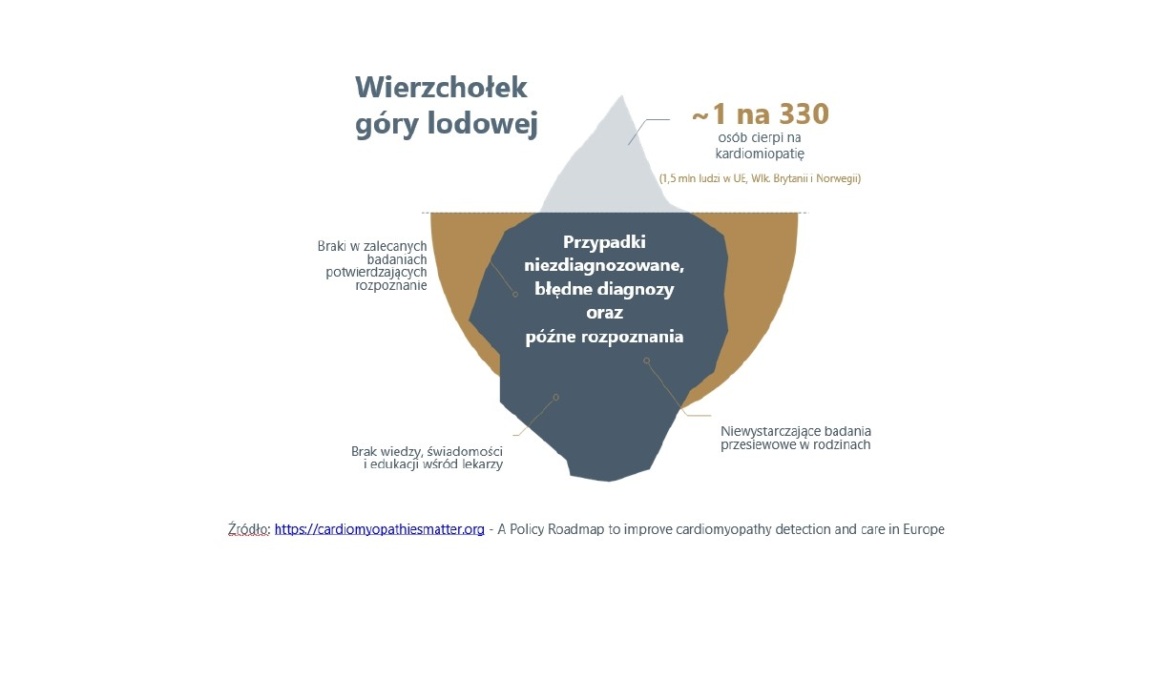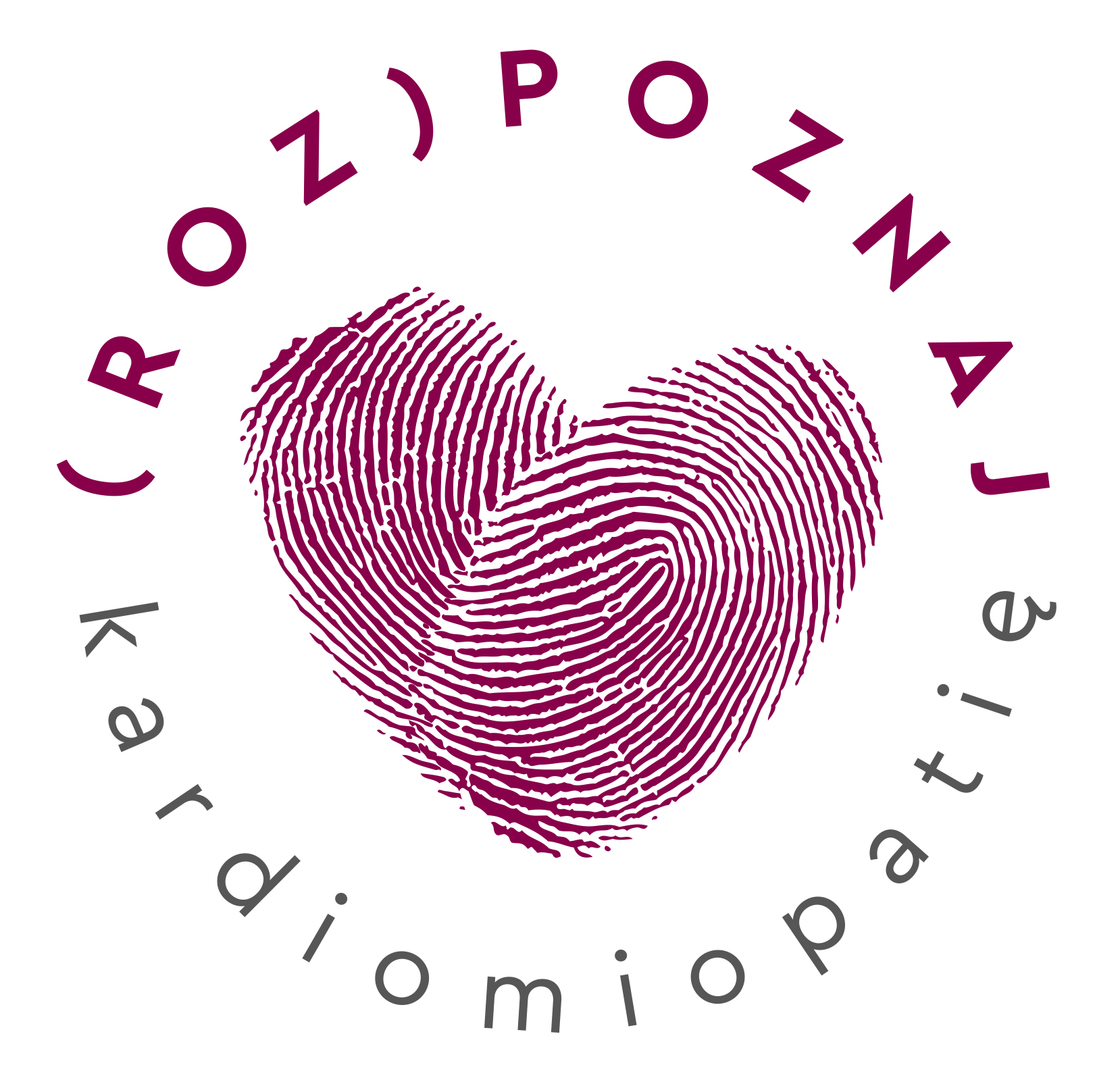Cardiovascular diseases have for many years been the most common cause of death in Poland. Although the topic of heart disease is constantly present in the public debate, public awareness of the prevention and risks of cardiovascular diseases still seems to be insufficient. This is especially true for those conditions that are less well known. These include cardiomyopathies - untreated they can even lead to death. This is why education aimed at both the public and the medical community is so important. Creating awareness of this dangerous and difficult-to-diagnose condition is the main objective of the campaign that is just beginning (Un)get to know cardiomyopathy!
Cardiomyopathy, what is it?
Cardiomyopathies are a group of diverse heart conditions. There are 5 types of cardiomyopathy:
- dilated (enlarged heart cavities and impaired systolic function of the primary left ventricle). Dilated cardiomyopathy is the most common of all primary cardiomyopathies, often with a genetic basis. It results in impaired myocardial contractility, usually with the development of biventricular heart failure, preceded by left ventricular failure.
- hypertrophic (thickening of the heart muscle, usually the left ventricle). Hypertrophic cardiomyopathy is mostly genetic. Hypertrophic cardiomyopathy results in non-physiological myocardial hypertrophy, most commonly of the left ventricular wall and the interventricular septum. The disease is accompanied by symptoms of heart failure (including shortness of breath on exertion, fainting, pain behind the sternum, palpitations) and is associated with an increased risk of sudden cardiac death.
- arrhythmogenic Right ventricular cardiomyopathy (the heart muscle is replaced by scar tissue or fat). Arrhythmogenic right ventricular cardiomyopathy is genetically determined This is a relatively rare condition with a mechanism of development that is not fully understood. In the course of arrhythmogenic cardiomyopathy, there is a gradual replacement of cardiomyocytes (heart muscle cells) by fat cells and fibrosis, which leads to progressive right ventricular dysfunction and typical symptoms of right ventricular failure accompanied by cardiac arrhythmias.
- restrictive (myocardial stiffness). Restrictive cardiomyopathy occurs spontaneously (idiopathic restrictive cardiomyopathy) or in the course of secondary conditions leading to damage to the heart and features of its restriction (amyloidosis, sarcoidosis, endocarditis, systemic sclerosis a complication of radiotherapy, treatment with anthracyclines and others). It leads to fibrosis of the cardiac ventricular wall and impaired diastolic process due to their excessive stiffness. This leads to impaired filling of the ventricles in the diastolic phase and, as a result, also a reduction in cardiac output (i.e. the amount of blood that is ejected from the right and left ventricles with each contraction).
- unclassified (e.g. metabolic, alcoholic, puerperal). All other types of cardiomyopathy that do not meet the diagnostic criteria for the types of cardiomyopathy described above are included in this category.
Most of the types of cardiomyopathy outlined above can lead to the development of heart failure. Sudden death of the patient is also a common risk. Cardiomyopathies affect 1 in 330 people. However, it is widely believed that a significant proportion of cases of this disease remain late diagnosed or even undiagnosed, hence the above rate represents the so-called 'tip of the iceberg'.

"Cardiomyopathies are a very heterogeneous group of conditions and their diagnosis is quite difficult. They give a range of symptoms, although not always unambiguous, hence the need for medical awareness and attentiveness. The cardiomyopathies require the implementation of a number of diagnostic tests to identify them and exclude other diseases that give similar symptoms. In the case of a diagnosis of cardiomyopathy, it seems very important to complement the diagnostic process with a genetic diagnosis." - says Prof. Przemysław Leszek, MD, Head of the Heart Failure and Transplantation Clinic at the National Institute of Cardiology and member of the Heart Failure Association of the Polish Cardiac Society, and adds: "In order to make a diagnosis, the most important thing is to be aware of the condition in question. Knowledge of the different disease entities in cardiology, the characteristic symptoms and the differences resulting from their specific features helps to avoid misdiagnosis
and provides the opportunity to incorporate prompt and appropriate treatment".
Cardiomyopathies occur in patients of all ages. The disease can even affect young children
and cause them severe heart failure.
Untreated cardiomyopathy can lead to serious complications endangering health and life patient, such as heart failure, cardiac arrhythmias (e.g. atrial fibrillation, ventricular arrhythmias), vascular embolism (e.g. pulmonary embolism), stroke, sudden cardiac death.
The problem of cardiomyopathies has been recognised at EU level - both by the European Parliament and patient organisations. Among others, the report 'Cardiomyopathies Matter' - a blueprint for improving the diagnosis and treatment of cardiomyopathies in Europe, which was developed by the Cardiomyopathies Matter initiative and published in November 2022 at www.cardiomyopathiesmatter.org.
"(Dis)cognize cardiomyopathy".
This is a nationwide educational campaign initiated by Bristol Myers Squibb and supported by cardiac patient organisations, including the National Association of Patients with Heart and Vascular Diseases 'EcoSeres' and the Polish Association of Persons with
The campaign aims to raise awareness of heart failure. The aim of the campaign is to spread awareness of cardiomyopathy.
"National Association of Patients with Heart and Vascular Diseases <>. actively works, among other things, to build public awareness of cardiovascular diseases. As far as cardiomyopathies are concerned, they belong to the group of rare diseases and, as is well known, this is a therapeutic area that requires extensive education, both among the public and the medical community. Proper, early recognition of cardiomyopathies is an important first step in preventing the serious consequences of these conditions. I am convinced that, by joining forces, we will be able to improve the situation for patients affected by this problem." - highlights Agnieszka Wolczenko, President of the National Association of Patients with Heart and Vascular Diseases "EcoSerce".
Educational activities as part of the campaign "Un(learn about) cardiomyopathy". will target the public, patient organisations and experts so that as many people as possible have the chance to (un)learn about cardiomyopathy. Activities related to building awareness of cardiomyopathy in Poland are also supported by the well-known illustrator Henryk Sawka. The first in a series of several works by the artist dedicated to the disease, "Have a mind - examine your heart!" opens the campaign.


